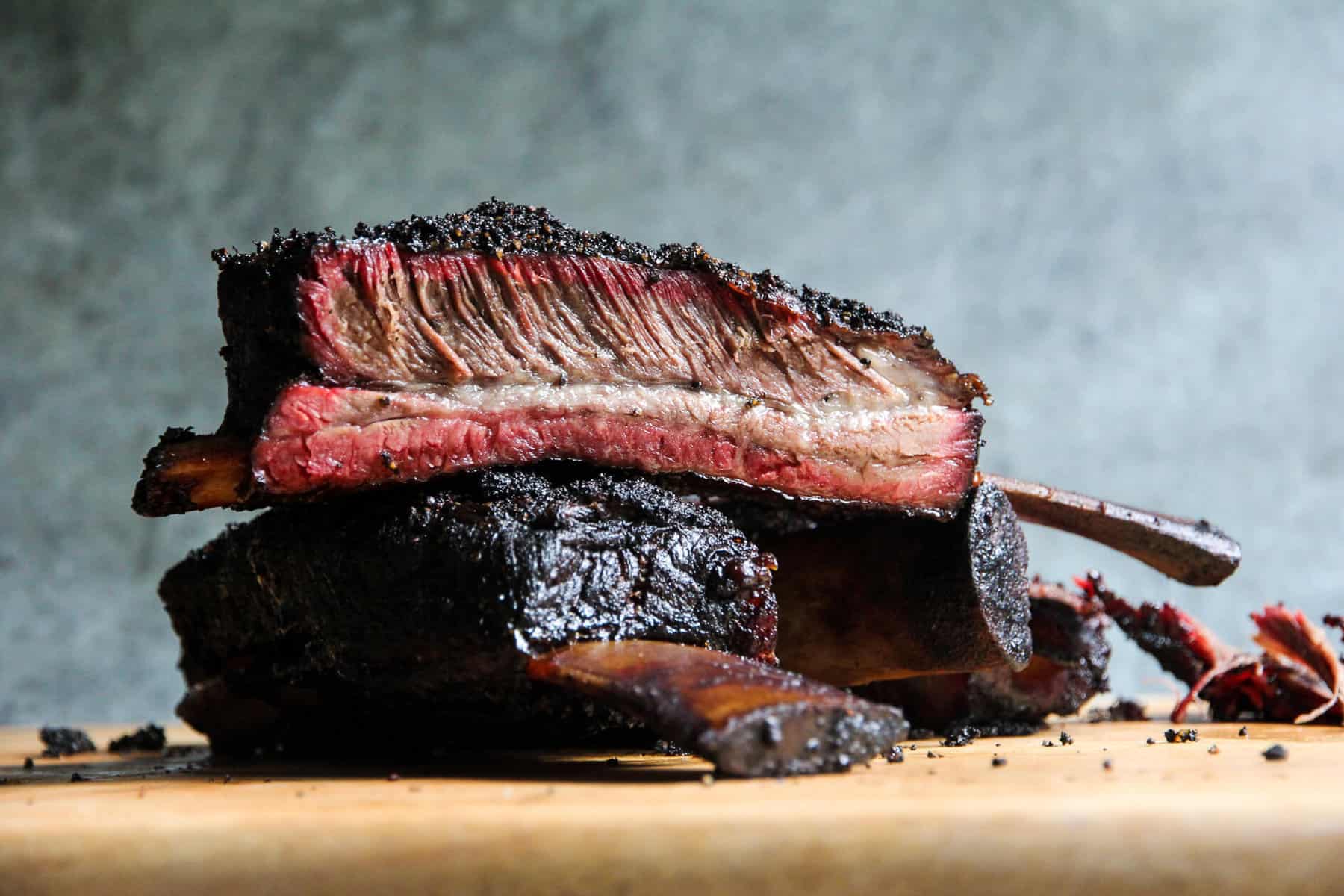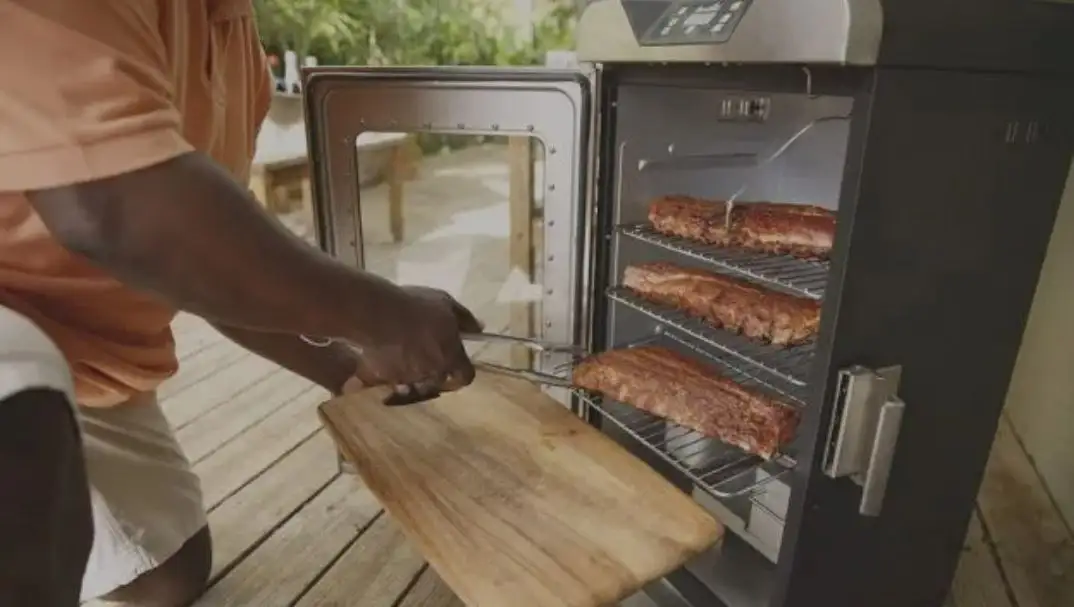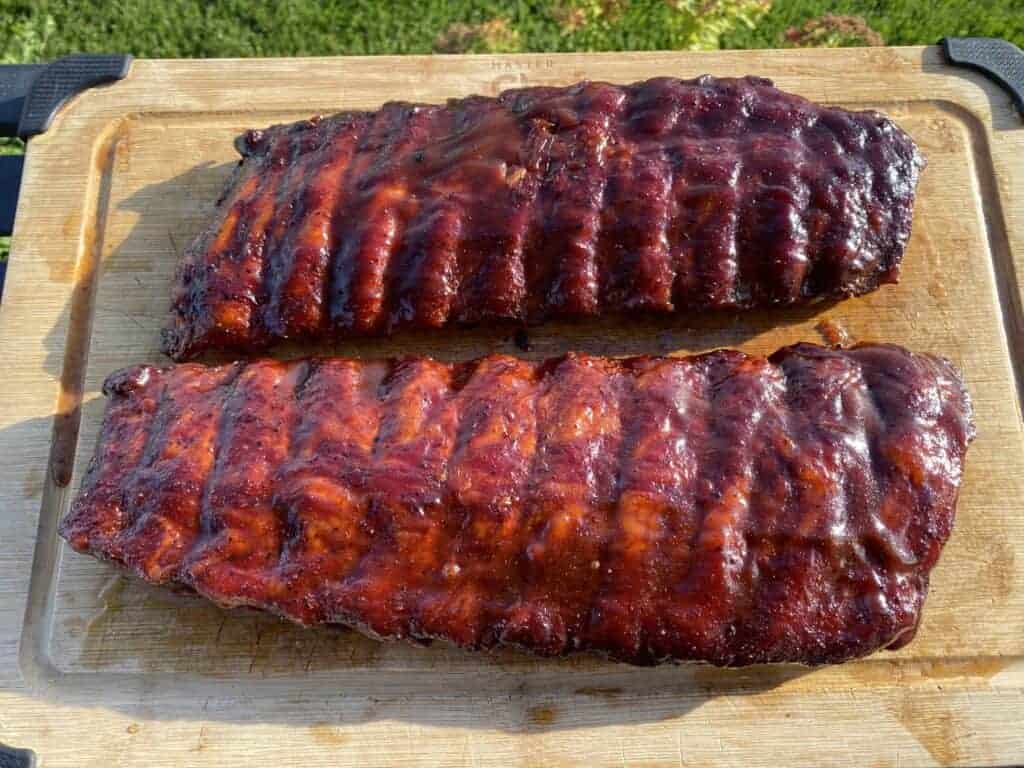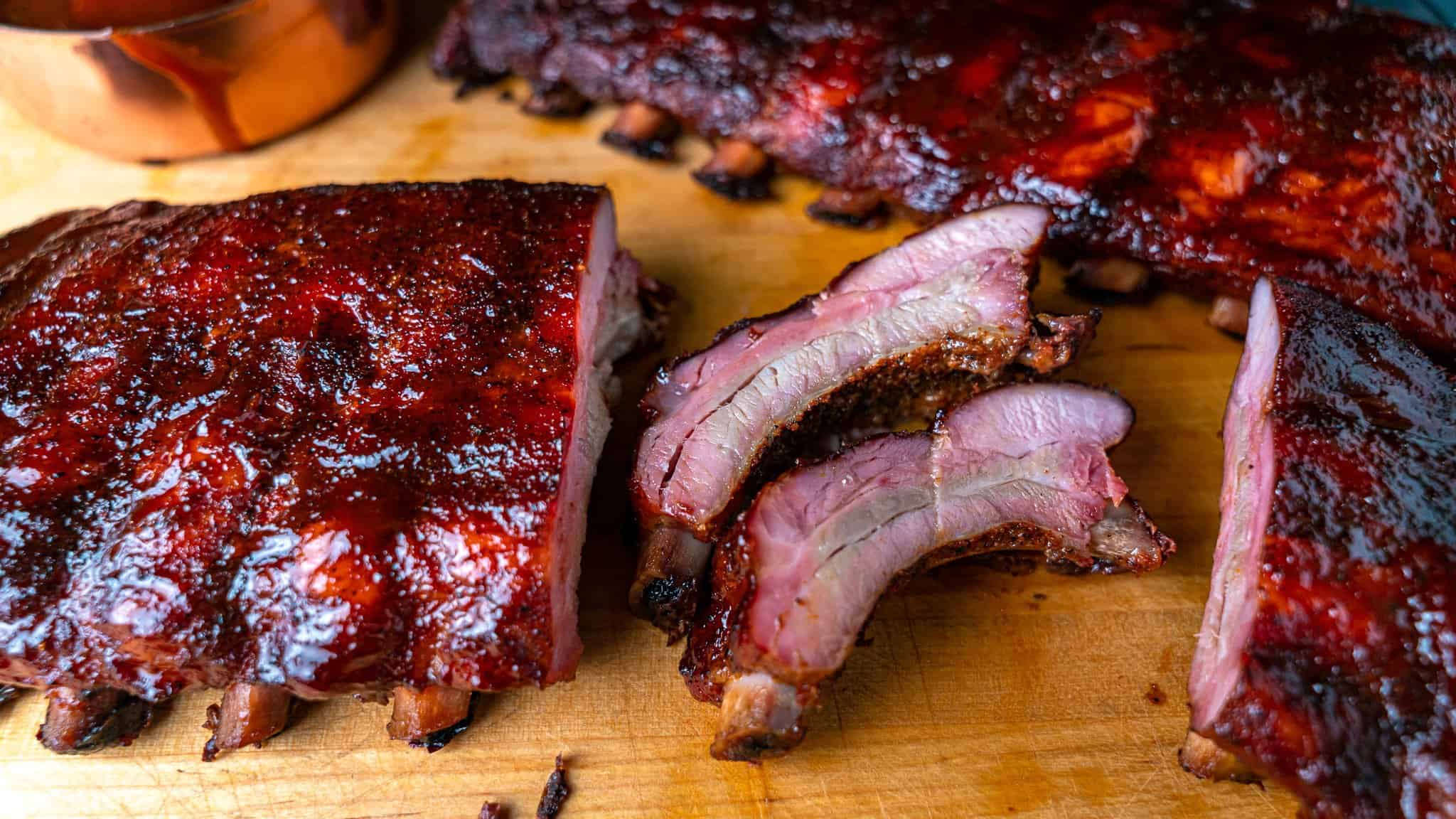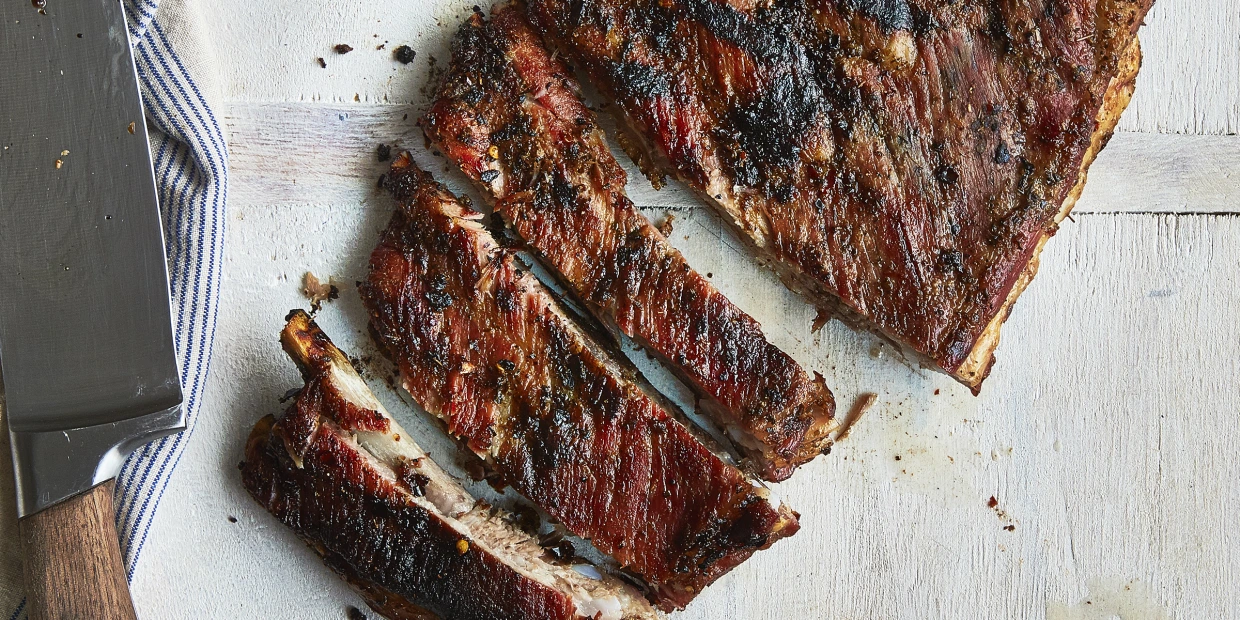How long to cook ribs on smoker? Smoking meat has a long and rich history that dates back thousands of years. The practice of smoking meat was initially developed as a way to preserve food before the advent of refrigeration. Over time, it evolved into a popular cooking method that not only preserved the meat but also imparted a unique and delicious flavor.
Among the various meats that can be smoked, ribs hold a special place in many people’s hearts (and stomachs). Whether it’s baby back ribs, spare ribs, or St. Louis-style ribs, smoking them has become an art form in itself. The slow and low cooking process allows the flavors to develop and intensify while tenderizing the meat to perfection.
Key Takeaways
- Smoking ribs is a science that requires understanding the role of smoke, temperature control, and wood selection.
- Preparing the ribs properly, including removing the membrane and seasoning, is crucial for a delicious end result.
- Temperature control is key to achieving tender, juicy ribs, and using a meat thermometer is highly recommended.
- Basting and mopping the ribs with a flavorful liquid can enhance the taste and texture of the meat.
- Resting the ribs after cooking allows the juices to redistribute and results in a more tender and flavorful end product.
Understanding the Science of Smoking
To truly appreciate smoking ribs, it helps to understand how this cooking method works on a scientific level. When you smoke meat, you expose it to low temperatures over an extended period of time. This slow cooking process breaks down tough connective tissues in the meat while allowing fat to render out slowly.
Chemical reactions occur during smoking that contribute to both flavor and tenderness. As wood burns in the smoker, it releases compounds such as lignin and cellulose which combine with proteins in the meat through Maillard reactions. These reactions create new flavors and aromas that are characteristic of smoked meats.
Choosing the Right Wood for Smoking Ribs
One crucial aspect of smoking ribs is selecting the right type of wood for your smoker. Different types of wood impart distinct flavors onto your food, so choosing wisely can greatly enhance your rib-smoking experience.
Common woods used for smoking include hickory, mesquite, applewood, cherrywood, oak, and pecan among others. Each type offers its own unique flavor profile ranging from sweet and fruity (applewood) to strong and bold (mesquite). When it comes specifically to pork ribs though, some woods pair exceptionally well. For example, hickory is a classic choice that complements the rich flavors of pork, while cherrywood adds a subtle sweetness that enhances the natural sweetness of the meat.
Preparing the Ribs for Smoking
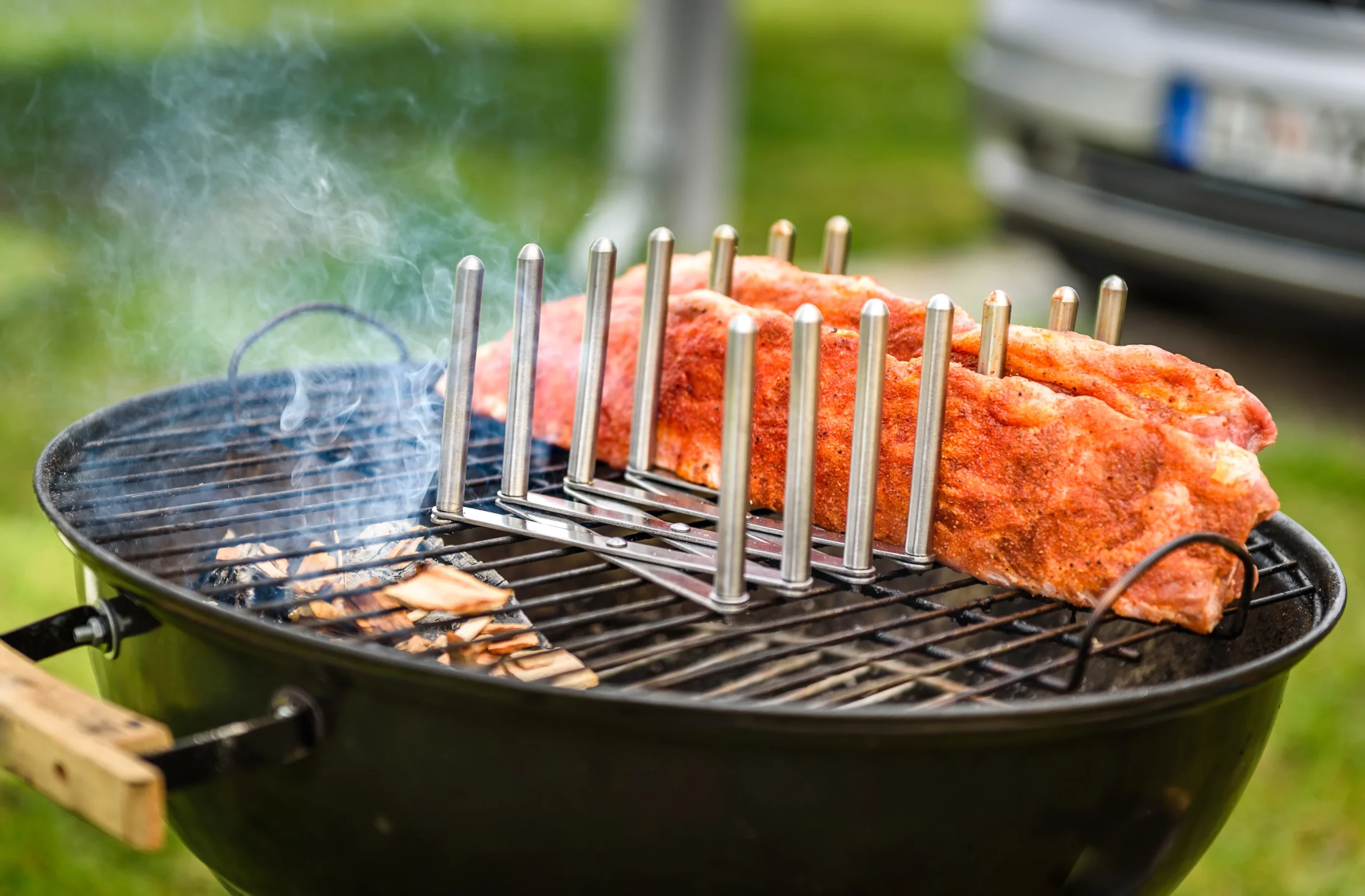
| Step | Description |
|---|---|
| 1 | Remove the membrane from the back of the ribs. |
| 2 | Apply a dry rub to the ribs. |
| 3 | Wrap the ribs in plastic wrap and refrigerate for at least 2 hours. |
| 4 | Remove the ribs from the refrigerator and let them come to room temperature. |
| 5 | Prepare the smoker and bring it to the desired temperature. |
| 6 | Place the ribs on the smoker and smoke for 3-4 hours. |
| 7 | Baste the ribs with a sauce during the last 30 minutes of smoking. |
| 8 | Remove the ribs from the smoker and let them rest for 10-15 minutes before slicing and serving. |
Before you can start smoking your ribs, it’s important to properly prepare them. This involves trimming excess fat and removing the tough membrane on the bone side of the rack.
Trimming excess fat helps prevent flare-ups and allows for better smoke penetration into the meat. Removing the membrane is equally important as it can hinder flavor absorption and result in chewy ribs. To remove it, simply slide a butter knife under one corner of the membrane and lift it up before gripping it with a paper towel or cloth to pull it off in one smooth motion.
Once your ribs are trimmed and ready, you have an opportunity to add extra flavor by applying a rub or marinade. A dry rub consisting of spices like paprika, brown sugar, garlic powder, salt, pepper, and other seasonings can be generously applied to both sides of the rack. Alternatively, you may choose to marinate your ribs overnight in a mixture of herbs, spices, vinegar or citrus juice for added tenderness and flavor infusion.
The Importance of Temperature Control
Maintaining consistent temperature throughout your smoking process is crucial for achieving perfectly smoked ribs. Most experts recommend cooking at temperatures between 225°F (107°C) and 250°F (121°C). This low heat allows collagen in connective tissues to break down slowly over time without drying out or becoming tough.
To control temperature effectively during smoking sessions lasting several hours requires careful monitoring using either built-in thermometers on your smoker or external probes inserted into the meat itself. Adjustments may need to be made periodically by adding more fuel (such as charcoal or wood chips) or adjusting air vents on your smoker accordingly.
The Role of Smoke in Flavoring Ribs
Smoke plays a vital role in flavoring your ribs during the smoking process. As the smoke circulates around the meat, it imparts its unique flavors and aromas into every nook and cranny.
The type of wood you choose will greatly influence the flavor profile of your ribs. For example, hickory wood produces a strong and smoky taste that pairs well with pork, while fruitwoods like apple or cherry add a subtle sweetness to complement the natural flavors of the meat.
It’s important to note that too much smoke can overpower the taste of your ribs, so moderation is key. A thin blue smoke is ideal as it indicates clean combustion without excessive billowing white smoke. Achieving this requires proper ventilation and careful attention to fuel management.
The Art of Basting and Mopping Ribs
During long smoking sessions, it’s essential to keep your ribs moist to prevent them from drying out. Basting or mopping techniques are commonly used to achieve this goal.
Basting involves periodically brushing a liquid mixture onto your ribs while they cook. This can be as simple as using apple juice or cider vinegar for added moisture and flavor enhancement. Mopping, on the other hand, involves applying a thin sauce or glaze onto your ribs using a mop brush or similar tool.
Both methods help maintain moisture levels in the meat while adding additional layers of flavor throughout the cooking process. However, care should be taken not to overdo it as excessive basting or mopping can wash away rubs or create an overly wet surface on your ribs.
The Ideal Cooking Time for Ribs on a Smoker
Determining how long to smoke your ribs depends on various factors such as weight, thickness, desired tenderness level, and personal preference for texture.
As a general guideline for spare ribs (St Louis-style), you can expect them to take approximately 5-6 hours at 225°F (107°C) to reach the desired tenderness. Baby back ribs, being smaller and leaner, may take slightly less time, around 4-5 hours.
To ensure your ribs are cooked to perfection, you can use a combination of time and temperature as a guide. However, the most reliable method is to check for doneness using the “bend test” or “toothpick test.” When properly cooked, the meat should pull away from the bone with ease and a toothpick inserted into the thickest part should slide in smoothly without resistance.
Resting and Serving Smoked Ribs
Resting your smoked ribs after they come off the smoker is an essential step that allows juices to redistribute throughout the meat. This resting period helps ensure maximum tenderness and juiciness when you finally sink your teeth into them.
To rest your ribs properly, loosely tent them with foil or place them in an insulated cooler for about 15-30 minutes before serving. This allows residual heat to continue cooking gently while preventing excessive moisture loss.
When it comes time to serve your smoked ribs, presentation is key. You can choose to serve them whole as a rack or cut them into individual portions depending on preference. Garnishing with fresh herbs like parsley or cilantro adds visual appeal while offering a refreshing contrast of flavors.
Common Mistakes to Avoid When Smoking Ribs
While smoking ribs can be a rewarding experience, there are some common mistakes that beginners often make which can affect their final results.
One common mistake is over-smoking or under-smoking your ribs. Over-smoking can result in an overpowering smoky flavor that masks other flavors while under-smoking may leave you with tough and chewy meat lacking depth of flavor.
Another mistake is not properly trimming excess fat or removing the membrane before smoking. Failing to do so can lead to greasy results or hinder proper smoke penetration.
Lastly, rushing the cooking process is a mistake to avoid. Smoking ribs requires patience and low temperatures to achieve optimal tenderness. Trying to rush the process by increasing heat or shortening cooking times can result in subpar results.
Tips and Tricks for Perfectly Smoked Ribs
To elevate your rib-smoking game, here are some additional tips and tricks:
1. Use a water pan in your smoker to help maintain moisture levels during the cooking process.
2. Consider using a combination of wood chips for more complex flavor profiles.
3. Experiment with different rubs, marinades, or glazes to find your favorite flavor combinations.
4. Wrap your ribs in foil during the last hour of smoking (known as the “Texas crutch”) to speed up tenderization if desired.
5. For added smokiness, try incorporating smoked salt or smoked paprika into your rubs or sauces.
Smoking ribs is not just about cooking meat; it’s an art form that combines science, technique, and creativity to produce mouthwatering results. Understanding the history and science behind smoking helps us appreciate this ancient culinary tradition even more.
Choosing the right wood for smoking ribs is crucial as it greatly impacts flavor profiles. Properly preparing your ribs by trimming excess fat and applying rubs or marinades ensures maximum flavor absorption during smoking.
Temperature control plays a vital role in achieving perfectly smoked ribs while smoke adds depth and complexity of flavors throughout the cooking process.
Basting or mopping techniques help keep ribs moist while adding layers of flavors but should be used judiciously.
Knowing when your ribs are done requires practice but can be determined through various tests such as bending or toothpick insertion.
Resting smoked ribs before serving allows juices to redistribute ensuring maximum tenderness while presentation adds visual appeal.
Avoiding common mistakes such as over-smoking, under-smoking, improper trimming, rushing cook times will lead to better results.
Lastly, incorporating tips and tricks like using water pans, experimenting with different flavors, or trying the Texas crutch can elevate your rib-smoking game.
So why not give smoking ribs a try at home? With a little practice and patience, you can become a master of this ancient cooking technique and delight your family and friends with perfectly smoked ribs that are bursting with flavor.
FAQs
What is a smoker?
A smoker is a cooking device that uses low heat and smoke to cook food, typically meat, over a long period of time.
What are ribs?
Ribs are a cut of meat from the ribcage of an animal, typically a pig or cow. They are a popular meat for smoking due to their high fat content and ability to absorb smoke flavor.
What is the difference between rub and marinade?
A rub is a mixture of spices and herbs that is applied to the surface of the meat before cooking. A marinade is a liquid mixture of acid, oil, and spices that the meat is soaked in before cooking.
What is the purpose of a rub?
The purpose of a rub is to add flavor to the meat and create a crust on the surface that helps to seal in moisture.
What is the ideal temperature for smoking ribs?
The ideal temperature for smoking ribs is between 225-250°F (107-121°C).
How long does it take to smoke ribs?
It typically takes 4-6 hours to smoke ribs, depending on the size and thickness of the meat.
What is the “3-2-1” method for smoking ribs?
The “3-2-1” method is a popular technique for smoking ribs. It involves smoking the ribs for 3 hours, wrapping them in foil and smoking for an additional 2 hours, and then unwrapping and smoking for a final hour.
What is the purpose of wrapping ribs in foil?
Wrapping ribs in foil helps to keep them moist and tender by trapping in steam and preventing the meat from drying out.
What is the difference between baby back ribs and spare ribs?
Baby back ribs come from the top of the ribcage and are smaller and leaner than spare ribs, which come from the bottom of the ribcage and have more meat and fat.
Originally posted 2024-01-23 04:14:31.

